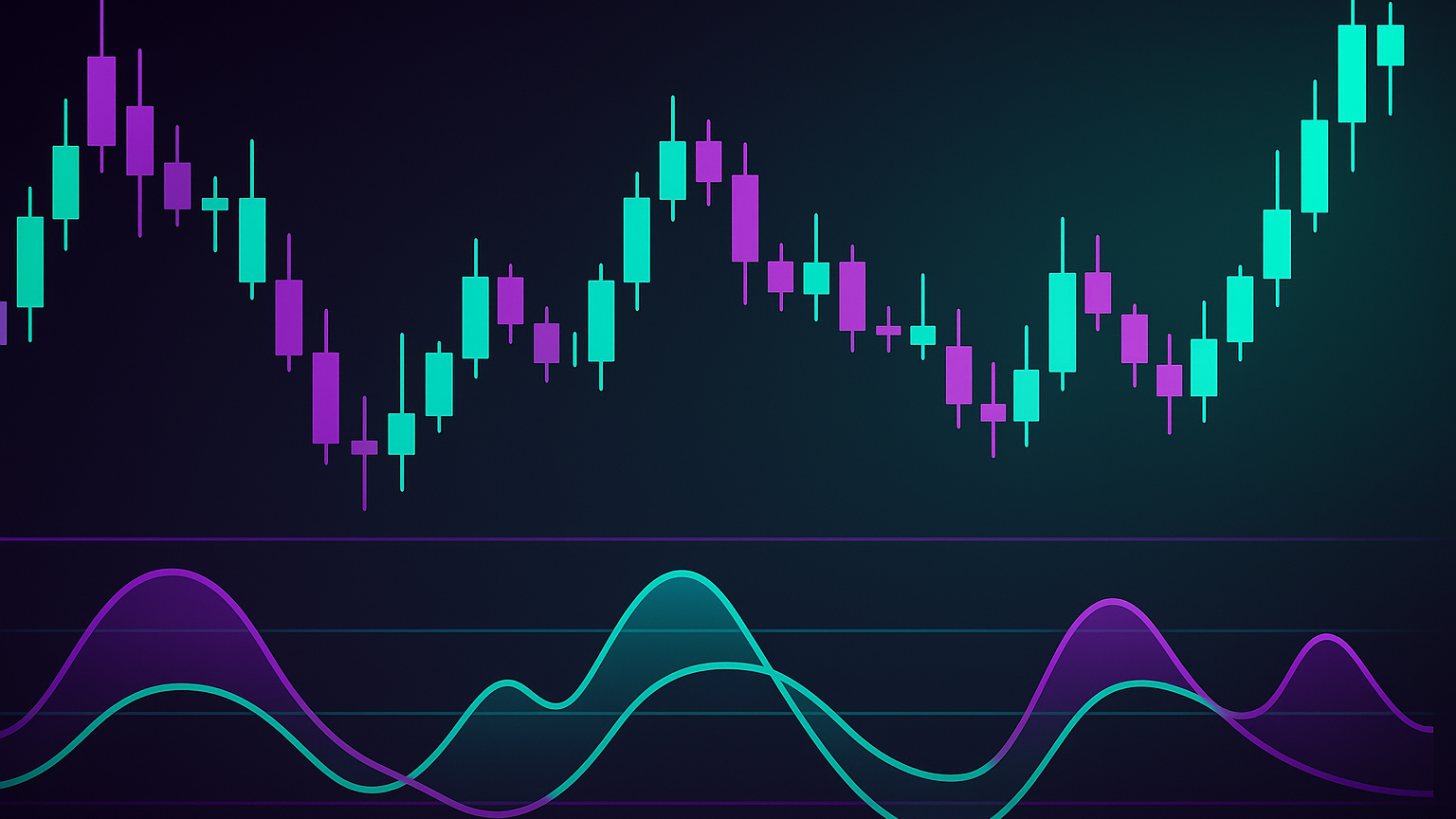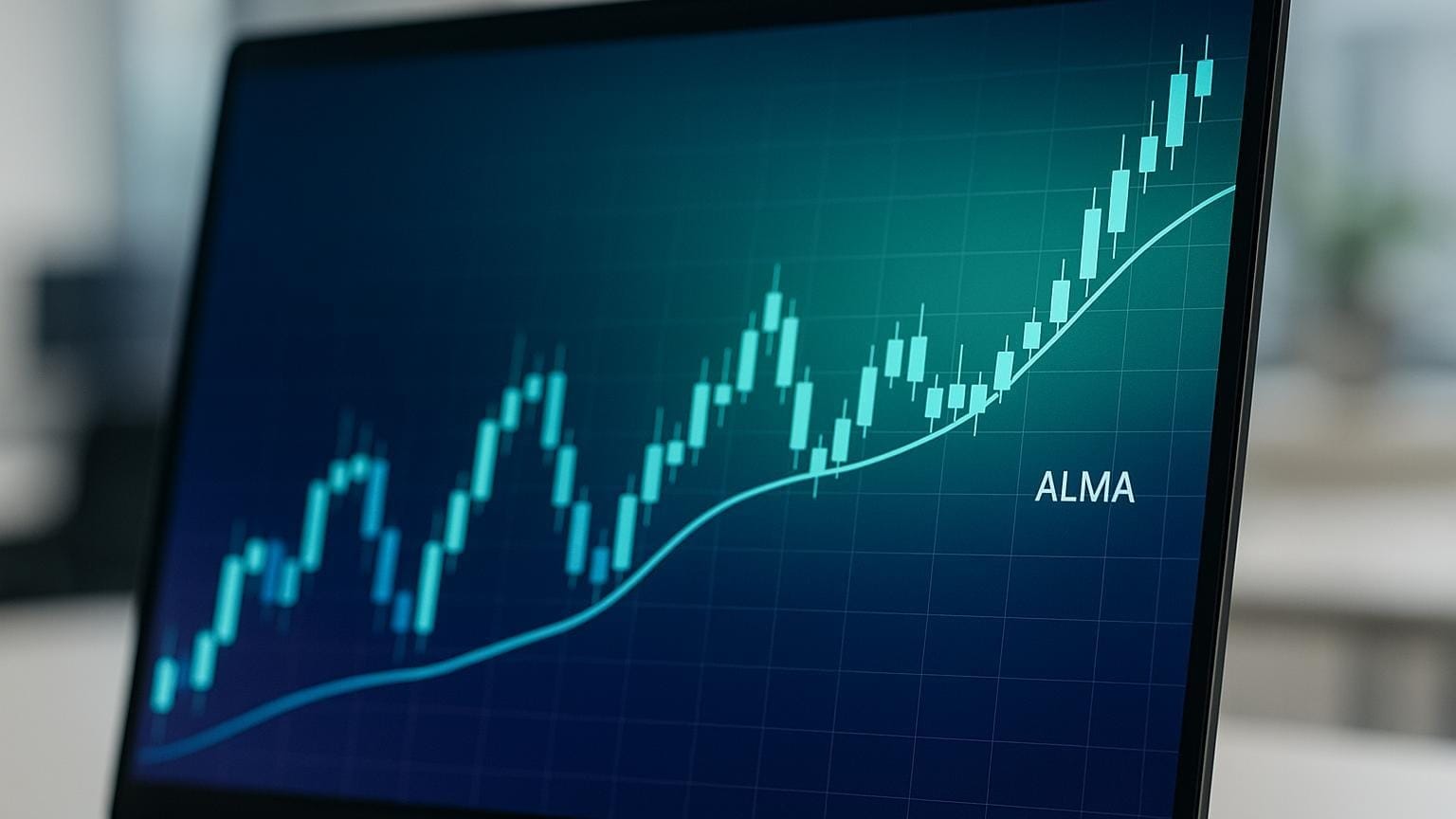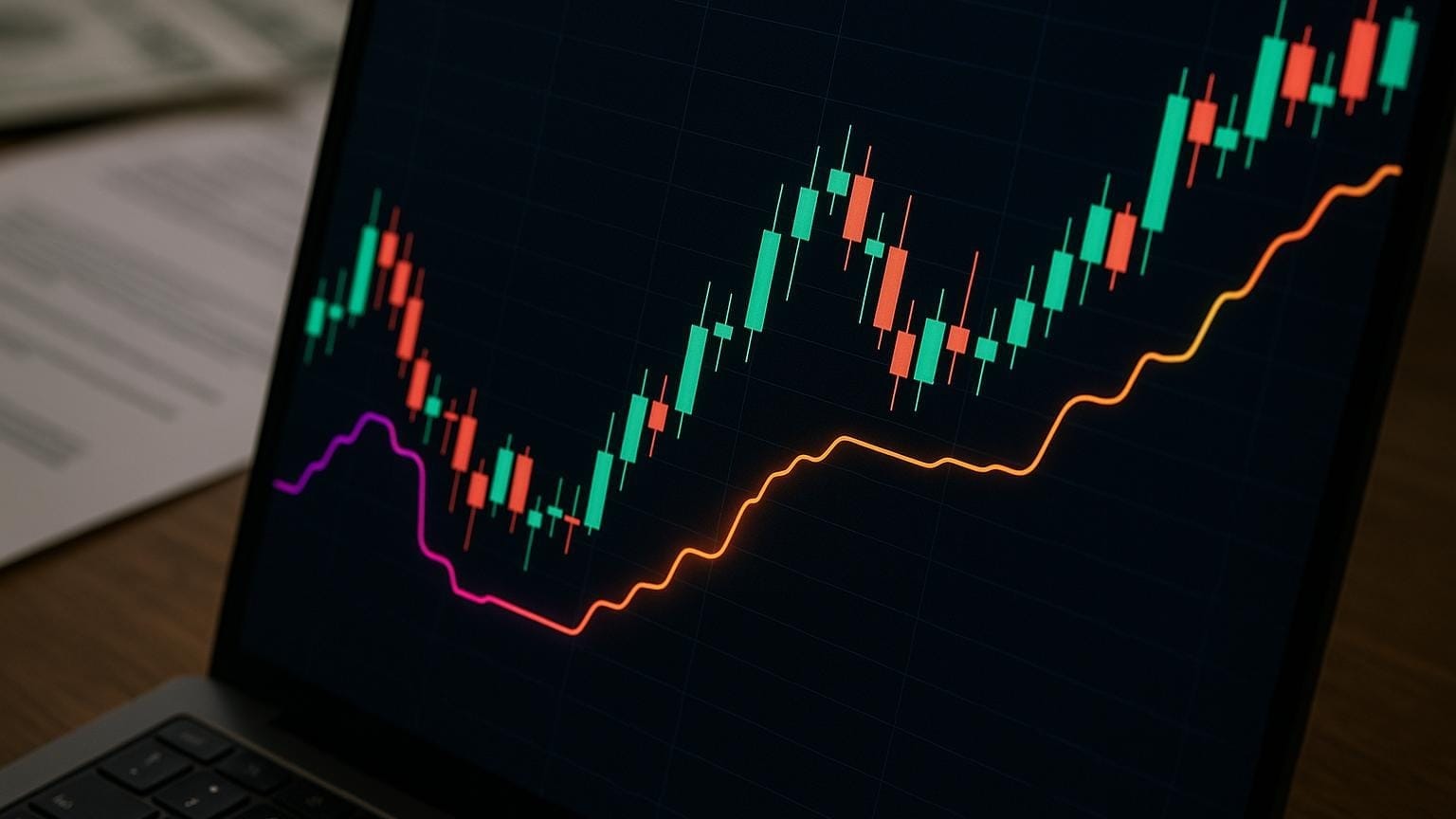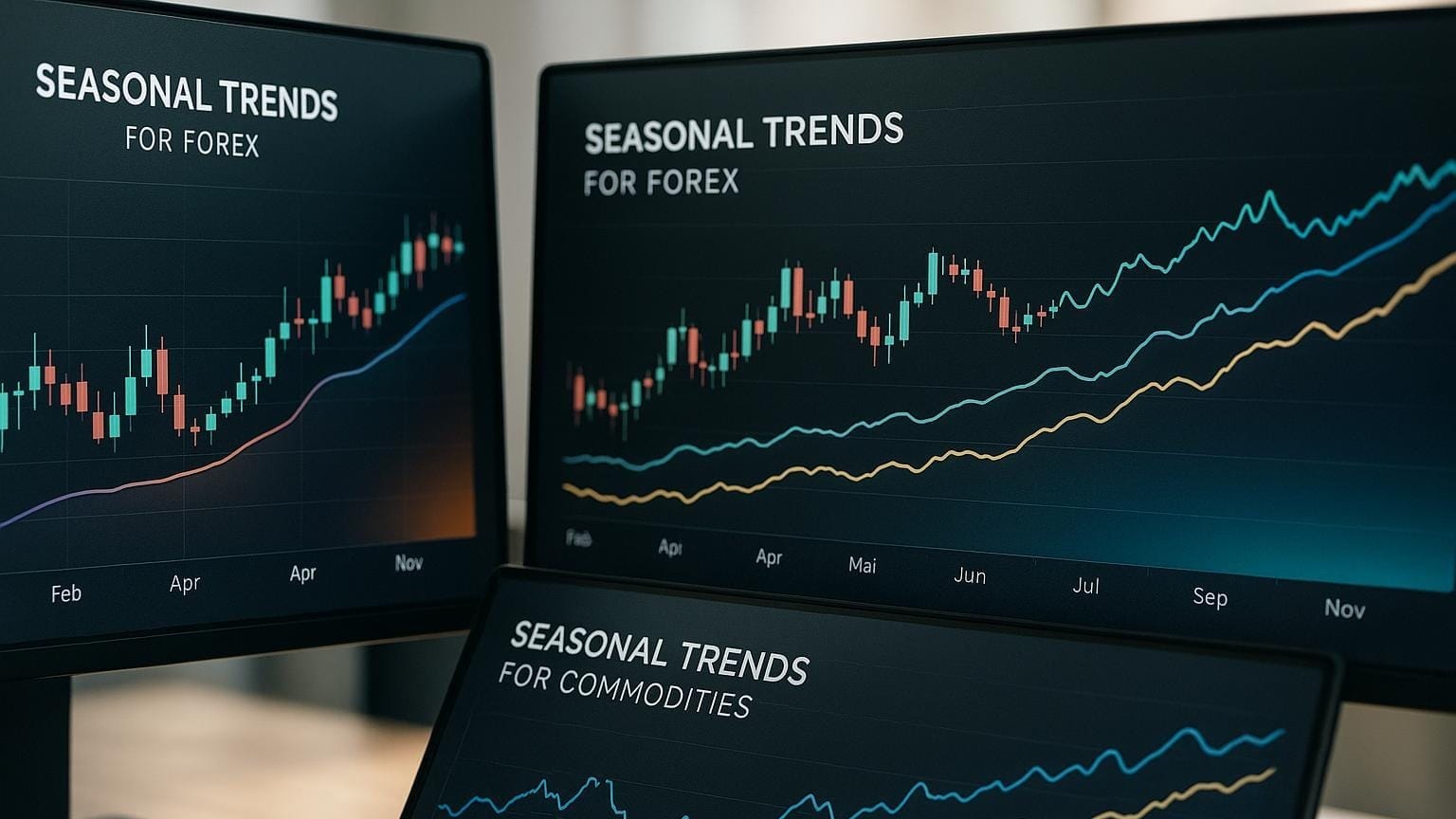Explore gap patterns in trading to identify market sentiment and improve your trading strategies with clear insights and practical tips.
Gap patterns can reveal market sentiment and trading opportunities. They occur when a security's opening price differs significantly from its previous closing price, creating a "gap" on the chart. Understanding the four main types—common, breakaway, continuation, and exhaustion gaps—can help traders predict price movements and trends.
Key Insights:
- Breakaway Gaps: High volume, signal new trends.
- Runaway Gaps: Confirm ongoing trends.
- Exhaustion Gaps: Indicate potential reversals.
- Common Gaps: Short-lived, occur in trading ranges.
Trading Tips:
- Use volume spikes to confirm gap strength.
- Combine gaps with candlestick signals for better predictions.
- Manage risk using stop-loss orders and technical indicators like RSI and moving averages.
Pro Tip: Not all gaps are equal—breakaway and runaway gaps often signal strong trends, while common gaps tend to close quickly.
Keep reading to learn how to identify these gaps, interpret their impact on market behavior, and apply them to your trading strategies with real-world examples and tools.
How to Trade the Three Gaps Pattern
4 Main Types of Gaps
Gaps in trading provide insights into price movements and market behavior. Each type of gap tells a different story about the market.
Common Gaps
These gaps occur during routine trading within established price ranges and are often accompanied by low trading volume. They tend to close quickly as prices revert to previous levels.
| Feature | Details |
|---|---|
| Volume | Low |
| Location | Within trading ranges |
| Fill Speed | Fast |
| Market Impact | Limited |
On the other hand, breakaway gaps represent a more dramatic market shift.
Breakaway Gaps
Breakaway gaps happen when a price breaks out of a consolidation phase, signaling the start of a new trend. For example, in July 2024, the EUR/USD market experienced a breakout following the first round of the French elections. The price jumped from 1.0713 to 1.0744, sparking a 4.35% rally that pushed the exchange rate to 1.1175 within seven weeks.
Runaway Gaps
Runaway gaps, or measuring gaps, occur during an ongoing trend. They confirm the trend's strength and suggest that the momentum is likely to continue. These gaps reinforce the direction of the existing trend.
Exhaustion Gaps
Exhaustion gaps often indicate the end of a trend and are highly reliable for predicting reversals, with a 72% accuracy rate. This makes them a valuable tool for traders looking to time their moves. Key features include:
| Feature | Details |
|---|---|
| Volume | Much higher than usual |
| Price Action | Large gap with a sharp movement |
| Market Mood | Overstretched conditions |
| Follow-through | Weak or no continuation after the gap |
These gaps act as early indicators of potential reversals, helping traders adjust their strategies effectively.
Gap-Related Candlestick Signals
Understanding gap types is just the start—combining them with candlestick signals can sharpen your ability to predict trends.
Bullish Gap Patterns
Bullish gaps often point to the start or continuation of an upward trend, especially when accompanied by strong trading volume. A breakaway gap, where the price breaks out of a trading range, usually signals the beginning of a new trend and reflects strong market sentiment. Similarly, a runaway gap during an existing uptrend suggests that bullish momentum is likely to continue.
| Pattern Type | Volume Characteristics | Trading Signal |
|---|---|---|
| Bullish Breakaway | High volume surge | Indicates a new uptrend is forming |
| Bullish Runaway | Steady high volume | Points to ongoing upward momentum |
For breakaway gaps, high volume is crucial—it confirms the strength of the emerging trend. Always check for volume spikes to validate these bullish signals.
While bullish gaps focus on upward moves, bearish gaps highlight potential declines.
Bearish Gap Patterns
Bearish gaps signal downward trends and require careful analysis of the current market conditions. Volume is a key factor here too. For instance, an exhaustion gap often shows a surge in volume alongside a wide gap, hinting at a possible trend reversal.
| Pattern Type | Key Characteristics | Trading Implication |
|---|---|---|
| Bearish Breakaway | High volume, support breach | May signal the start of a downtrend—consider short positions |
| Bearish Runaway | Steady volume continuation | Suggests ongoing bearish momentum—reinforce short positions |
| Bearish Exhaustion | Volume surge with wide gap | Indicates a potential reversal—close shorts or prepare for a rally |
Key strategies for trading gap patterns:
- Watch trading volume closely alongside price gaps.
- Use additional technical tools to confirm signals.
- Set stop-loss orders to manage risk.
- Align your trades with the broader market trend.
- Wait for post-gap price action to confirm the signal.
Gap Trading Methods
Gap trading requires careful analysis and disciplined risk management. Here’s how you can approach trading gaps effectively.
Gap Fill Analysis
This method focuses on identifying gaps in price charts and anticipating their potential to retrace. While common and exhaustion gaps often fill, breakaway and runaway gaps are more likely to signal the continuation of a trend.
| Gap Type | Fill Likelihood | Volume Characteristic | Trading Approach |
|---|---|---|---|
| Common | High | Low to moderate | Wait for the price to return to the gap area |
| Breakaway | Low | High | Trade in the direction of the emerging trend |
| Runaway | Low | Moderate to high | Follow the ongoing trend |
| Exhaustion | High | Very high | Prepare for a potential trend reversal |
"Gaps are risky due to low liquidity and high volatility but they offer opportunities for quick profits if they're properly traded."
Using Technical Indicators
Technical indicators can help confirm gap signals and improve trading accuracy:
- Moving Averages: Tools like the 20-day and 50-day EMAs can confirm the trend direction after a gap.
- RSI (Relative Strength Index): Check if RSI supports the gap movement.
- Volume Analysis: High volume spikes often validate the strength of a gap.
- LuxAlgo Toolkits: The Price Action Concepts toolkit can help identify high-probability gap setups.
Combining these indicators with a disciplined approach can lead to more consistent trading outcomes.
Managing Risk in Gap Trading
Risk control is critical when trading gaps:
- Position Sizing: Reduce your position sizes during periods of high volatility.
- Stop-Loss Placement:
- For long trades, place stops below the gap low.
- For short trades, place stops above the gap high.
- For common gaps, using the midpoint as a reference can work well.
- Pre-Event Risk Management: Close or reduce positions before major market events, such as earnings reports, as gaps during these times can lead to unpredictable price movements.
"In my years of trading and teaching, I've found that recognizing gaps can offer traders a strategic edge." - Tim Bohen
Tools and Examples for Gap Trading
Gap Trading Case Studies
Let's dive into some real examples of gap trading in action.
Take Apple Inc. (AAPL) as an example. Its chart once showed a bullish engulfing pattern followed by a gap moving higher. Later, a bearish exhaustion gap hinted at fading momentum. Shortly after, a strong runaway gap confirmed the potential for further upward movement.
Another case involves UBER. When Amazon revealed its investment in Grubhub, UBER experienced a sharp gap down. Instead of shorting immediately at premarket support, traders waited for a bounce, then initiated short positions.
Using Price Action Concepts Toolkit for Gap Analysis
The Price Action Concepts toolkit on TradingView is designed to automate advanced price action analysis, making it easier for traders to spot and act on key imbalances in the market. One of its most powerful features is imbalance detection, which highlights areas where market activity was unbalanced between buyers and sellers, often resulting in gap-like price movements.
Within the imbalance features, two gap-related tools stand out:
- Fair Value Gaps (FVGs): These occur when there’s a zone between two candles where price did not trade, often indicating a strong move with little to no retracement. FVGs help traders spot areas that might act as future support or resistance and are frequently associated with institutional activity. The Price Action Concepts toolkit automatically identifies and visualizes these gaps for you, allowing for faster and more reliable trading decisions.
- Opening Gaps: The toolkit also detects and highlights gaps that form between the previous session’s close and the current session’s open—classic gap patterns that traders use for potential reversals or trend continuations. Recognizing these gaps in real-time helps traders align their entries and exits with prevailing market sentiment.
The combination of these imbalance tools with other automated features in the Price Action Concepts toolkit, such as support/resistance and trendline detection, makes it a versatile resource for gap trading across different market conditions. This enables traders to quickly identify high-probability setups and act with greater confidence.
For further details on how the imbalance and gap features work, you can explore the official LuxAlgo documentation.
Market-Specific Gap Strategies
Customizing your gap trading approach to the market you're working in can improve outcomes.
-
Stock Market Gaps
- Frequency: Gaps appear daily
- Trading Window: Pre-market and post-market hours
- Average Gap Size: 1-5%
- Best Opportunities: Small-cap stocks often show larger gaps
-
Forex Market Gaps
- Frequency: Typically seen during weekend transitions
- Trading Window: Sunday/Monday market openings
- Average Gap Size: 0.3-1%
- Key Focus: Major economic news and weekend developments
Each market type has its quirks. For instance, small-cap stocks tend to offer larger and more frequent gaps, while forex gaps are usually tied to specific events or weekend shifts. Understanding these nuances helps traders fine-tune their strategies for better results.
Conclusion
Gap Pattern Overview
Gap patterns serve as important market signals, each offering specific clues about price behavior. Here's a quick breakdown of their typical volume traits and what they mean for trading:
| Gap Type | Volume Trait | Trading Insight |
|---|---|---|
| Breakaway | High volume | Indicates the start of a trend |
| Runaway | Moderate to high | Confirms a trend is ongoing |
| Exhaustion | Declining volume | Suggests a potential reversal |
| Common | Average volume | Has little predictive value |
Combining gap patterns with candlestick analysis can make trading signals more dependable.
Guidelines for Trading Gaps
Trading gaps effectively means verifying patterns carefully and managing risks with discipline. Here's how to approach it:
Pattern Verification
- Use volume to confirm gap types: high volume backs breakaway gaps, while declining volume hints at exhaustion gaps.
- Wait for price action to confirm the gap before trading.
Risk Management
- For long trades, set stop-loss orders below support; for short trades, place them above resistance.
- Keep an eye on gap fills—common gaps often close within a few sessions.
"Gaps in trading have been used as powerful indicators of support and resistance for a long time in technical analysis." – Optimus Futures
Keep in mind that gap behavior can vary depending on the market you're trading in. Adjust your strategy based on the current market environment to make the most of these patterns. By following a structured approach, traders can consistently use gap patterns to inform their decisions.








